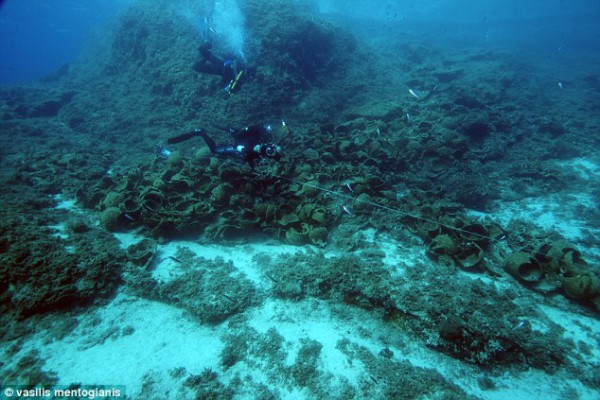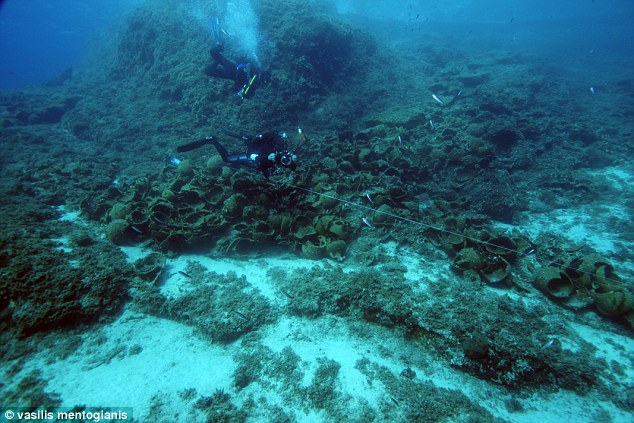
The discovery was made near one of the most significant trade routes of the antiquity that served the people of Greece, Egypt and Cyprus in ancient times. The items recovered from the site suggest that the shipwrecks’ age between 700 BC and 16th century. Archaeologists discovered a whole treasure of broken remnants of cargo ships, and claim that there are possibly a total of 40 shipwrecks in the same region. According to the archaeologists working on the project, the recent discovery was made in an area of no more than 17 miles, around the cluster of 13 islands of Fourni Archipelago in the Aegean Sea.
Peter Campbell from the University of Southampton and co-director of US based RPM Nautical Foundation, hailed the discovery and said that in a short period of just 13 days his team managed to identify some 12 percent of total known discoveries ever recorded in Greek waters. (Mail Online)
The 17 miles long stretch of water makes up a significant chunk of an ancient trade route that played a very vital role for the economies of Greece and Asia Minor. The Cargo ships and other merchant vessels had to pass through these waters, some of these ships had to take shelter on the rocky regions of the Greek islands. Since Ikaria and West coast of Samos did not attract the merchants due to lack of any sound harbors on their shores, the obvious destination of ships seeking some rest had to be Fourni, which explains the staggering number of shipwrecks in the region.
The discovery was made possible as a result of a joint venture by RPM Nautical foundation and Greek Ephorate of Underwater Antiquities. A number of local divers, and fishermen also aided the archaeologists and professional divers in identifying the wrecks.
According to Greek director Mr. George Koutsouflakis, the team did not expect such astonishing result as they were only diving on very limited information available. However, Mr. Koutsouflakis added, after a few dives the team realized that they had stumbled upon a massive treasure of ancient shipwrecks littered with artefacts2015 dating back to 700 BC.
